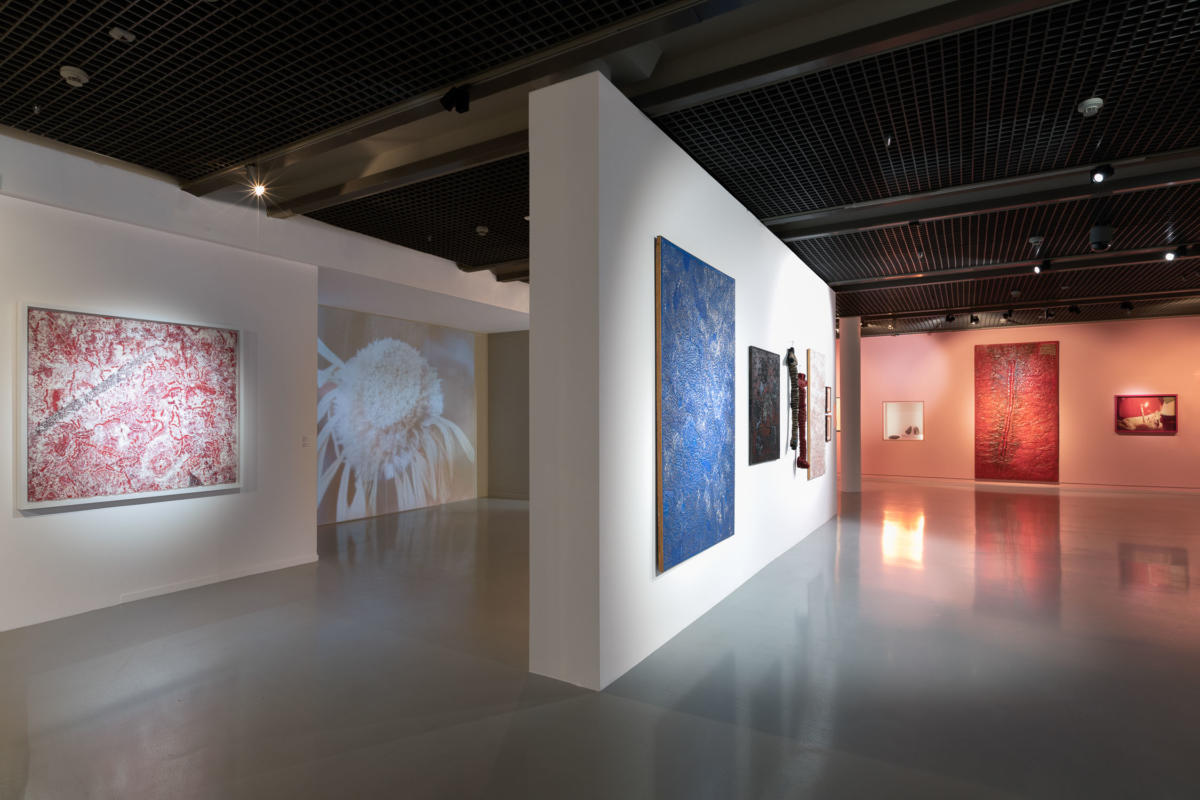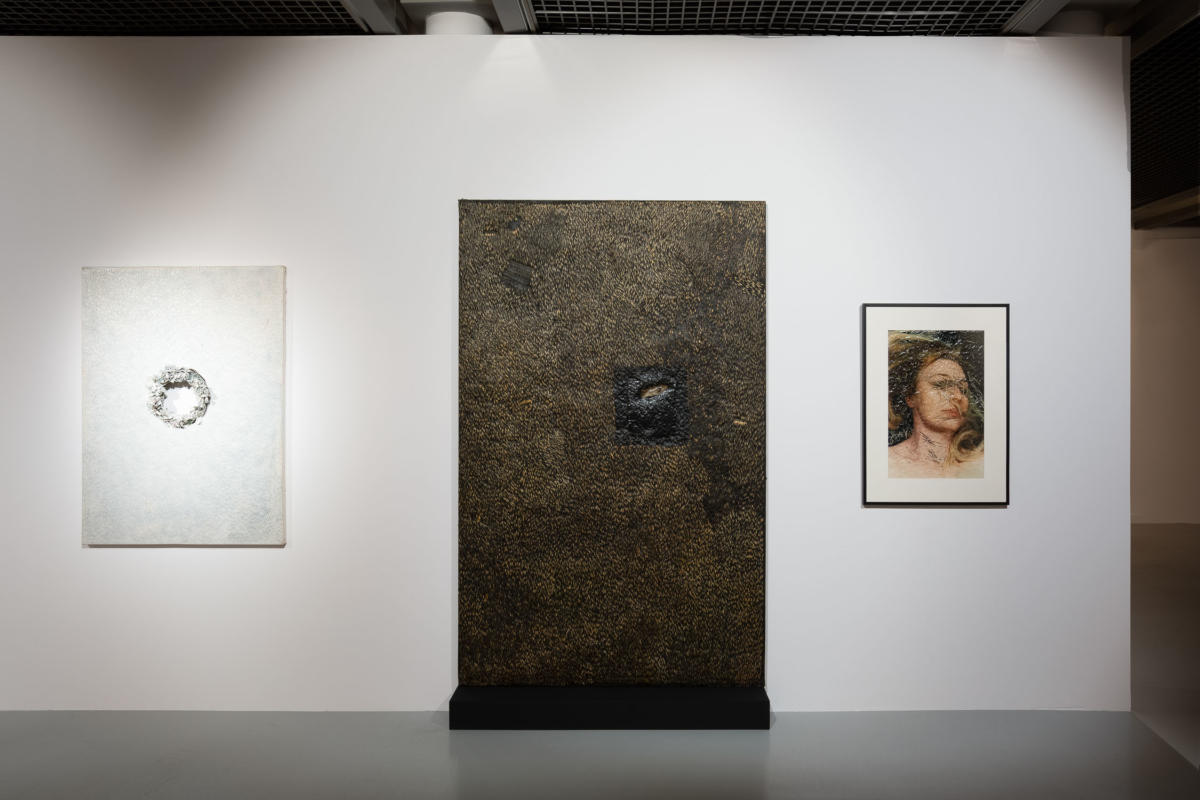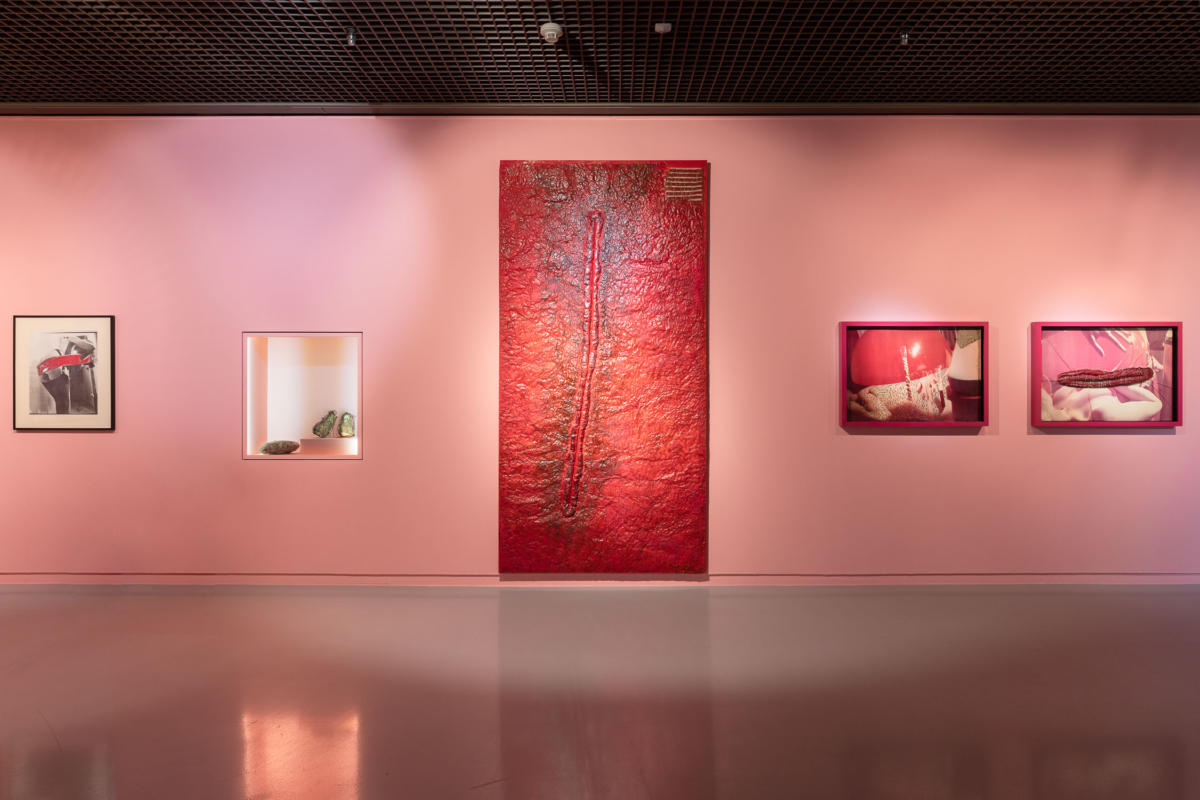
Teresa Tyszkiewicz is one of the most distinct female figures in late twentieth-century Polish art. Though she enjoyed a firm presence on the art scene at the turn of the 1970s and 1980s, her work practically disappears from the Polish discourse following her relocation to France in 1982. An intensification of art-historical research into the 1970s brings renewed interest in her oeuvre, with her early experimental films entering the canon, without, however, being critically sanctioned on the same level as the now-classic works of the leading protagonists of Polish feminist art. For the most part, the originality and uniqueness of this oeuvre, which spans over four decades of practice, remains today unrecognized or forgotten.[1]
Beginnings
Teresa Tyszkiewicz’s entrance to the art world took place in the milieu of the Współczesna Gallery, one of the leading hubs of neo-avant-garde art in Warsaw, and the film medium. From 1978 onwards, she collaborated with Zdzisław Sosnowski on films and photographic projects (e.g. Permanent Occupation, 1979, The Other Side, 1980),[2] and, in 1980, debuted on her own with the films Day after Day and Grain. At the turn of the 1980s, Tyszkiewicz joined the Foto-Art movement,[3] and co-founded[4] the Zespół Filmowy “Remont” production studio, whose aim was to facilitate the more efficient and professional production and distribution of art films. It was through that structure that she realized her subsequent film projects; at the same time, searching for the right medium to express herself, she made works on paper, reflecting her interest in matter. The introduction of martial law in December 1981 brought an end to that period of her practice and became the immediate reason for Tyszkiewicz and Sosnowski’s decision to emigrate to France. In fact, during a time of political “Sturm und Drang,” there was not enough attention and space in Poland for this kind of feminine expression, liberal and bold.
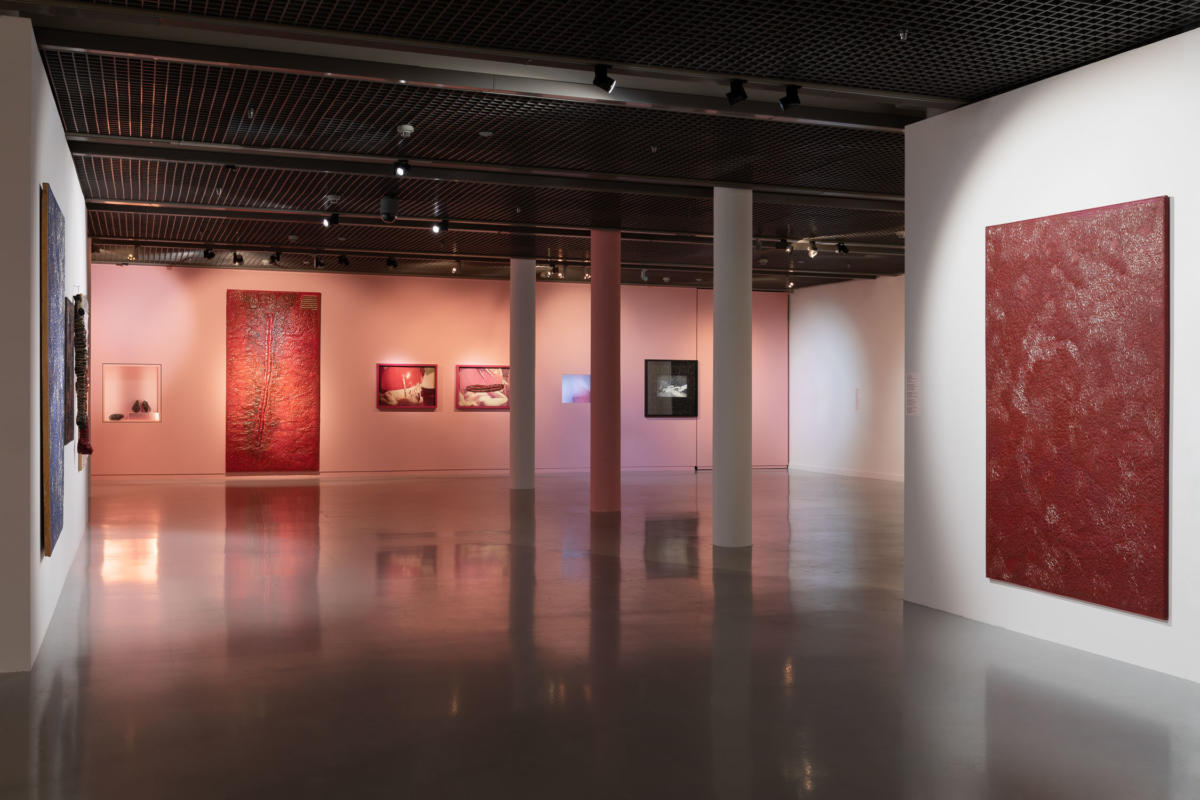
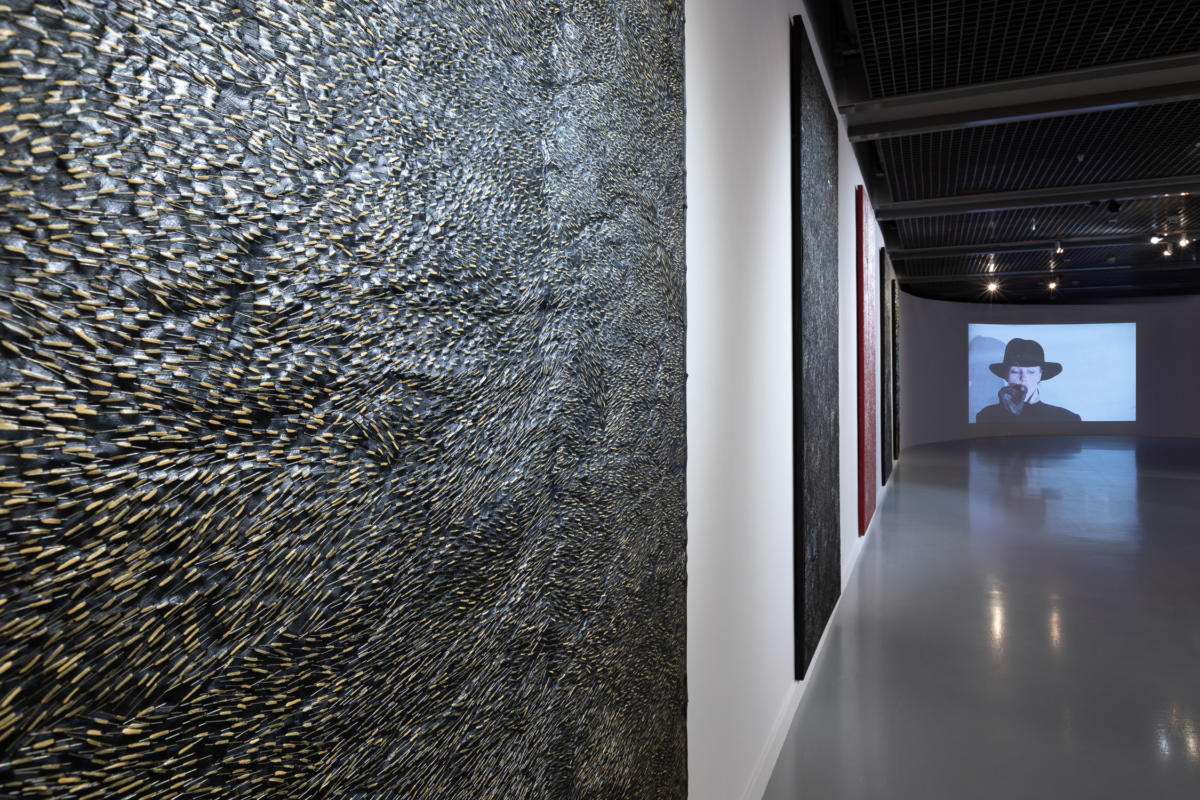
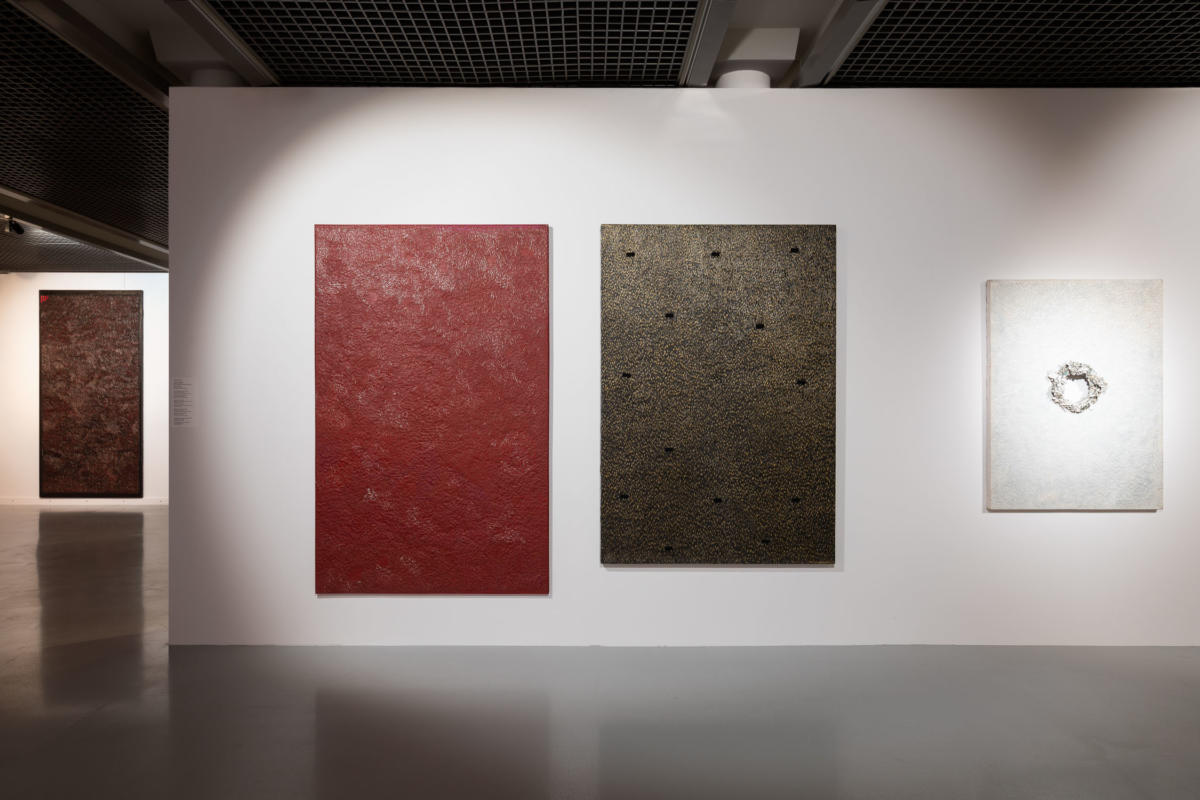
Body, Sensuality, Intuition
At the centre of Tyszkiewicz’s art is the body: a body aware of its sexuality, experiencing pleasure, occasionally shameless – or, at least, manifesting femininity and the feminine experience without shame. The body is also, or perhaps first of all, an artistic medium, a source of knowledge and potentially painful experience.
Staged from 1979 onwards, Tyszkiewicz’s intimistic performances, filmed and documented photographically, have until now been interpreted in the context of “consumption art” and of discourses aimed at demystifying the cultural stereotypes of femininity. Critics have stressed that her works “lay bare their impact on shaping the essentialist vision of a woman in contemporary life and visual culture.”[5] This is doubtless true: Tyszkiewicz’s artistic debut, the film Day after Day (1980), is clearly based upon such a premise. But the semantic structure of her films and photographs seems to me to be more complex and, above all, more personal. Developing a private mythology as well as using it as a research tool for an analysis of oneself and the present becomes a central issue of these works. These unscripted for-camera performances from the late 1970s and early 1980s can be seen as an attempt to discover oneself beyond the assimilation of dominant cultural patterns. The way that she sensually and passionately “immerses” herself in matter, seeks shelter in it, and wraps herself up in materials belonging to the order of the Earth, which is archetypically associated with femininity – grains, lumps of earth, feathers, cotton wool – all indicate Tyszkiewicz’s fascination with matter (both in works on paper and in films and photographs), which stems from a need to affirm a primal relationship between body and matter, which in many cultures, including primitive ones, is bound up with the feminine.[6]
From the very beginning, Tyszkiewicz firmly bases her practice on the experience of and confrontation with matter, avoiding purely intellectual or ideological underpinnings and thus eluding the modernist paradigm. The principal medium in this method is the body, which the artist trusts fully. In this sense, Tyszkiewicz’s method echoes Julia Kristeva’s search for the essence of “female genius.” The French psychoanalyst and philosopher finds it precisely in the identity of thought and real physical experience, in female psycho-sexuality, that, as she writes, is reluctant to isolate itself in the obsessive palace of “pure thought,” in the abstraction of the super-ego, or the phallic proficiency of logical calculations. A “femininity” so construed, which can characterize both women and men, prefers regions which are said to be “poetic” thought, Kristeva continues, arguing that meaning is rooted here in the sensory reality, with representations of words rubbing against representations of things, and ideas giving way to impulses.[7]
Body, Pin, and Pricking Reality
In order to be able to fully understand the essence of Tyszkiewicz’s art, one must not detach her performances, photographs, and films from the context of her less known works that were produced almost concurrently, from 1981 onwards. It was then that the artist discovered a device that would would come to dominate her entire practice – the pin, or épingle in French. The transition from wrapping oneself in matter to pricking reality and inflicting pain constitutes a reversal of order – from seeking unity with matter to revising the connection between body and matter. However, the relationship of intimacy is not broken immediately. In the first “pin works” from 1981, Tyszkiewicz pricks paper and then wraps the sheet in wadding or horse hair, as if annihilating the brutality of the original gesture. It is only upon her arrival in France, after she has discovered her favourite format (300 x 150 cm) and medium (paper pasted on canvas), that the pin-pricking process acquires a characteristic theatricality, resulting from the repeated and actually brutal gesture of puncturing fleshy and resistant matter.
The “pin works,” which Tyszkiewicz continued to make until the end of her life, are an effect of a laborious, months-long process of pricking paper, photographs, canvas, or objects. This kind of ritual performance involves the artist’s body in a procedure based on rhythmic, repeated, continuous accumulation of gesture. The body’s movement over the surface leaves shapes which are its “image.” In this sense, the structure of the “pin works” is corporeal and organic, and the method’s processuality and repetitiveness determines its performative character.
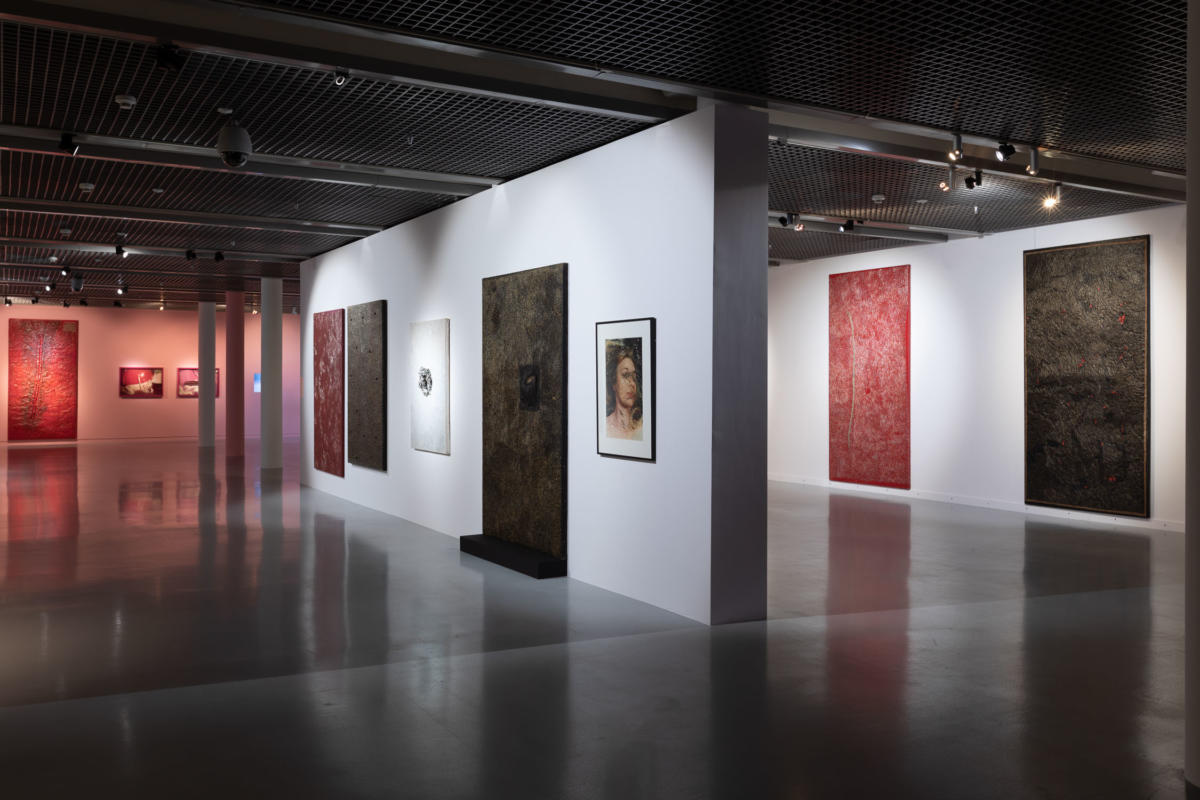
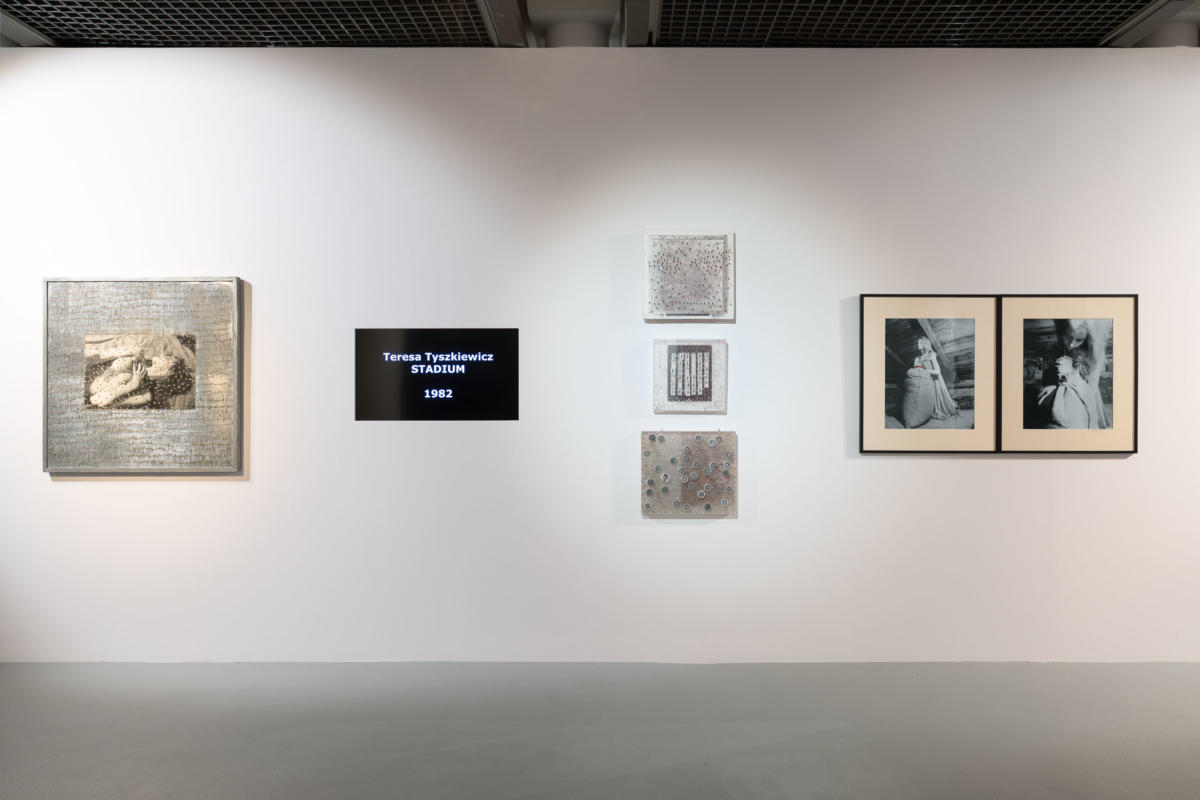

The extraordinary aura of the “pin works,” and especially of large-format reliefs, is not limited to their baroque decorativeness and spectacularity – almost paradoxical, given the laboriousness and painfulness of the process of their production. This aura, I believe, has to do with a phenomenon related to the Bachelardian “muscular consciousness.” The French philosopher uses the phrase to describe a relationship between the body and space,[8] whereas in the context of Tyszkiewicz’s works “muscular consciousness” would refer to a sense of physical identification between the work and the body of the spectator, who has a muscular “feeling” of physiological affinity with the work. In fact, these works’ dimensions (300 x 150 cm) and their vertical orientation suggest a need for “containing” the body within them, and the rhythm and movement of the pins on the work’s surface serve as a constant reminder of an indissoluble relationship with the body producing the work.
The object here is not a logic of building correlations and tensions between elements on a surface, of structuring it. Rather, it is their “physical” character and tactility, construed in the context of contemporary theories on the role of touch in culture, that is significant. The “pin works” are tactile because they communicate not only through sight. As William Bogard puts it, “Unlike vision, which is concentrated in the head, tactility is distributed throughout the body (including the eyes), in sheets of varying intensities. It is not one of the five senses (touch), but a capacity of all of them, a quality of openness or sensitivity. Tactility involves not only so-called extero-perception (perception directed outward to the external environment), but also proprioception, the body’s internal sense of itself and its required efforts to move or resist movement.”[9]
The trance-like process of pushing the pins became a ritualized way of expressing oneself and one’s relationship with the world, a unique record of the artist’s daily struggles, and at the same time a means of building a personal space of expression. The piercing sequence, in itself highly expressive and actually brutal, appears as a metaphor of pain and anguish as well as a voodooistic ritual that brings relief. A sensual experience of femininity, analyzed by Tyszkiewicz in for-camera performances and photographic works, is extended – by means of an everyday, repetitive, and long-term process of “pinning” – to include an attempt to express one’s own condition through a physical, actually painful experience and confrontation with matter.
Femininity, Physiology, Screws, and a Solder Gun
Remaining within an economy of dialectical tension between sensuality and brutality, let us return to the issue of femininity. Tyszkiewicz analyzes and visualizes the feminine experience, including in its most physiological aspects, in a highly authentic, honest, and absolutely direct manner. In her era, this was an extraordinarily progressive practice, for even today female physiology remains a major social taboo.[10] The bloody red omnipresent in Tyszkiewicz’s work is bound up not only with the symbolism of female sexuality and eroticism; in some works, it may also – especially in combination with cotton wool – refer to menstruation blood. The gooey substance in Breath (1981), which the artist puts her hands in, brings to mind mucus or tabooed bodily fluids. Finally, pasta (in the film ARTA, edited especially for the purpose of the exhibition[11]) in a staged birth scene “emerges obscenely” from inside the body – the vagina and breasts, transferring to the area of pure physiology the experience of birth and maternity, which in Judeo-Christian culture can be presented only as sublime or actually mystical. Ambiguous and ambivalent femininity is Tyszkiewicz’s domain. Even the highly erotic, concave, lushly red and almost corporeal vaginal forms that she shapes on the surface of her assemblages and paintings turn out, upon closer inspection, to be pricked with pins. They thus become vaginae dentatae, evoking both fascination and an ambiguous sense of repulsion and fear, eluding the economy of male desire and unequivocal categorizations of images of female sexuality.
Attributes ascribed to the man, in the essentialist approach, quickly appear in Tyszkiewicz’s highly sensual universe: the artist incorporates screws, saws, and steel rods in her works, and uses the solder gun to make them. Her attitude toward matter is streaked with a certain technical sensibility, which manifests itself in the use of the aforementioned devices, as well as in the technological procedures involved in the making of certain works, and objects in particular. The process of producing the “pin works,” effected through an aggressive, even auto-aggressive ritual of pricking matter with sharp pins, is a specific and likely not easily apprehensible way of seeking the truth about one’s relationship with the world.[12]
This kind of visualization of the feminine experience, a constant oscillation on the thin line between eroticism and physiology, even repulsion, amounts to an expansion – groundbreaking in the 1980s – of the field of art to include non-normative femininity, encompassing sensuality, eroticism, and fragility as well as brutality, pain, force, and even abhorrence. In Tyszkiewicz’s works, these categories coexist and overlap, producing a tense equilibrium and contravening essentialist classifications. When the artist pin-pricks her own self-portraits, puncturing sensual or erotic images of herself, it is not an act of negation but rather of updating; she incorporates the images in her present, more complex and ambiguous. They become matter incorporated into the pin-pricking process of the everyday and accompanying a project of the revaluation of meanings.
Memory of Things
Tyszkiewicz’s artistic practice, based to a large extent on repetition and long-term process, is inextricably woven into a network of existential correlations. Quotidian objects – witnesses of her everyday life – quite often become the matter of her works. These are belts, old clothes, even shoes, which are incorporated in the work, burdened with the past and storing the artist’s personal memory. In this sense, her art is autobiographic, though it is by no means auto-narrative. On the contrary, based on a profound, personal experience, her art turns out to be extraordinarily communicative and – on the level of feelings and emotions – ultimately highly universal. Contemporary humanities tell us that only radical subjectivity opens the way to true objectivity. That is why Tyszkiewicz’s voice sounds so credible.
This essay accompanies the exhibition Teresa Tyszkiewicz: Day After Day at Muzeum Sztuki in Łódź
[1] In 1998, Warsaw’s Zachęta Gallery staged an exhibition of Tyszkiewicz’s pin works, curated by AndaRottenberg and titled Pins, which detached them from the context of the artist’s other works. It does notseem to have significantly changed the reception of Tyszkiewicz’s art in Poland.
[2] The duo’s works won critical acclaim; see, for example, Jerzy Busza’s enthusiastic review, “Stałezajęcie,” Kultura, no. 39 (1979).
[3] The term “Foto-Art,” coined by Zdzisław Sosnowski, denoted art forms using photography and film in the sense of communication and mediated persuasion.
[4] With Henryk Gajewski and Zdzisław Sosnowski.
[5] See https://artmuseum.pl/en/filmoteka/praca/tyszkiewicz-teresa-oddech; based on David Crowley, “The Art of Consumption,” in Łukasz Ronduda, Florian Zeyfang, eds, 1,2,3… Avant-Gardes: Film/Art Between Experiment and Archive (Warszawa-Berlin: Centrum Sztuki Współczesnej Zamek Ujazdowski, Sternberg Press, 2006); Łukasz Ronduda, Polish Art of the 70s Avant-Garde (Jelenia Góra-Warszawa: Polski Western, Centrum Sztuki Współczesnej Zamek Ujazdowski, 2009).
[6] Consequently, it would be worth interpreting Tyszkiewicz’s art in light of the discourse accompanying the work of those second-wave feminists, for whom references to Mother Earth and prehistorical matriarchal cultures were an important element of contextualizing their own work.
[7] Julia Kristeva, Le génie féminin. vol. III, Les mots – Colette ou la chair du monde (Paris: Fayard, 2002), 561; English edition: Colette, transl. Jane Marie Todd (New York: Columbia University Press, 2004).
[8] Gaston Bachelard, La Poétique de l’espace (Paris: Presses universitaires de France, 1958), 29, 30.
[9] William Bogard, “The Coils of a Serpent: Haptic Space and Control Societies”, https://journals.uvic.ca/index.php/ctheory/article/view/14513.
[10] Tyszkiewicz’s work is interesting to look at in the context of exhibitions analyzing contemporary women’s art, e.g. Paint, Also Known as Blood: Women, Affect, and Desire in Contemporary Painting, curator Natalia Sielewicz, Museum of Modern Art, Warsaw, 7 June–11 August 2019.
[11] ARTA, 1984/2019, 6’19”.
[12] Auto-aggression in women’s art is a subject to explore. A major taboo in contemporary society, it is a disease of women, the “speech of a wounded body.” This is pointed out by Agata Araszkiewicz in the excellent essay “Ekstatyczki, misteryczki i inne święte,” OBIEG on-line, 2 May 2007, https://archiwum-obieg.u-jazdowski.pl/artmix/1770 [retrieved 8 February 2020]. In the context of Tyszkiewicz’s work, it is certainly worth mentioning Gina Pane, and especially her extraordinary performance Azione Sentimentale (1974). Pane made works presenting a painful as well as poetic vision of her own body, which in ritualized performative sequences is juxtaposed with organic matter in combination with instruments of pain.
Imprint
| Artist | Teresa Tyszkiewicz |
| Exhibition | Day After Day |
| Place / venue | Muzeum Sztuki, Łódź |
| Dates | 29 May – 31 October 2020 |
| Curated by | Zofia Machnicka |
| Photos | Anna Zagrodzka |
| Website | msl.org.pl/en/ |
| Index | Muzeum Sztuki in Łódź Teresa Tyszkiewicz Zofia Machnicka |

